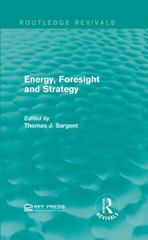Question
Consider the following description of an extensive form game with incomplete information. A sender is either a strong type or a weak type with equal
Consider the following description of an extensive form game with incomplete information. A sender is either a strong type or a weak type with equal probability. The sender can select either action A or action B. A receiver observes the sender's action and can either respond with action not brawl or action brawl. If the sender is strong and the receiver chooses action not brawl, then sender receives 1 and receiver gets 0, regardless of sender's action. If the sender is strong and the receiver chooses action brawl, the sender gets 0 and receiver gets -2, regardless of sender's action. If the sender is weak and selects action A and the receiver responds with action not brawl, sender gets 1 while the receiver gets 0. If the sender is weak and chooses action A and the receiver responds with action fight, the sender receives -1 while the receiver gets 1. If the sender is weak and chooses action B and the receiver responds with action not brawl, sender gets 1 c and receiver gets 0. If the sender is weak and chooses action B and the receiver responds with action brawl, sender gets 1 c while the receiver gets 1.
a. Draw the extensive form game tree.
b. Explain what it means for the sender to have a pooling strategy in this game. What are the pooling strategies for this game?
c. Explain what it means for the sender to have a separating strategy? What are the separating strategies for this game?
d. What conditions on c guarantee the existence of a separating Perfect Bayesian equilibrium? Characterize such an equilibrium. (Characterize conditions on c such that player 1 doesn't have incentives to deviate from the equilibrium strategy.)
e. What conditions on c guarantee the existence of a pooling Perfect Bayesian equilibrium? Characterize such an equilibrium. (Also specify what off-path beliefs are to fully characterize the equilibrium.)
Step by Step Solution
There are 3 Steps involved in it
Step: 1

Get Instant Access to Expert-Tailored Solutions
See step-by-step solutions with expert insights and AI powered tools for academic success
Step: 2

Step: 3

Ace Your Homework with AI
Get the answers you need in no time with our AI-driven, step-by-step assistance
Get Started


